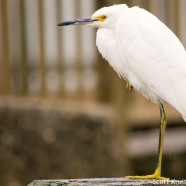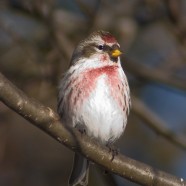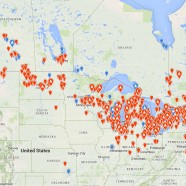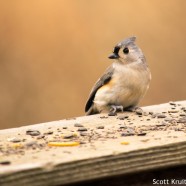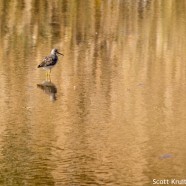Snowy Egret Handouts?
Someone please tell this Snowy Egret that it is not a gull nor a pelican…no handouts! If you are going to spend the winter in New England I suppose you have to get creative when it comes to finding easy meals. Yes, I am kidding, it was not begging or being fed…but I do think it was thinking about it as vehicles drove up and a frenzy of gulls went after some snacks. Scott Kruitbosch Conservation & Outreach Coordinator
Read MoreCommon Redpoll Irruption Update
This is a companion blog entry to the Winter Bird Forecast by Audubon Connecticut and the Roger Tory Peterson Institute of Natural History. The first two forecasts were published recently: “Cloudy with a Chance of Snowys” and “Expect the Unexpected”. The third will be coming soon! The Common Redpoll (Acanthis flammea) was predicted to make a “moderate to good flight” this fall and winter due to “variably poor to average” birch seed crops in the boreal forest according to Ron Pittaway’s 2014-15 winter finch forecast. Nearly a month ago I started to notice more reports...
Read MoreSnowy Owl December Update
If you are in Connecticut please be sure to check out winter birding forecast #1 brought to you by Audubon Connecticut and the Roger Tory Peterson Institute of Natural History. We will have more information on that new aspect of our partnership effort soon! In the month since I last posted an extended update about the 2014-2015 Snowy Owl irruption we have had a great number of additional birds coming south into the continental United States. Southern parts of Canada are also recording more owls at expected locations. The most intriguing part of their movement, in my opinion, is how Snowy...
Read MoreHead-turning Tufted Titmouse
This Tufted Titmouse (Baeolophus bicolor) is a real head-turner! Yes, I will be here all week, every week…but did you know these gals and guys are still expanding their range northward? Back in my grandfather’s (and Roger Tory Peterson’s) day in they were very rare in New York and New England. In the middle of the last century they started a massive surge to the north likely thanks to climate change, the spread of feeding stations, and changing habitats as the suburban and developed landscape opened up for their arrival. Scott Kruitbosch Conservation & Outreach...
Read MoreGreater Yellowlegs feeding alone
This Greater Yellowlegs was found foraging alone in a shallow, still and serene November pond. It may seem lonely in this location but many of its friends and counterparts, I am certain, were not far away. A bunch of long-legged waders were enjoying the same waters. On that very day I recorded Dunlin, Sanderling, Black-bellied Plovers, and likely Short-billed Dowitchers. Who said shorebirding in New England couldn’t be a Thanksgiving sport? Thanks, climate change! Scott Kruitbosch Conservation & Outreach Coordinator
Read More



